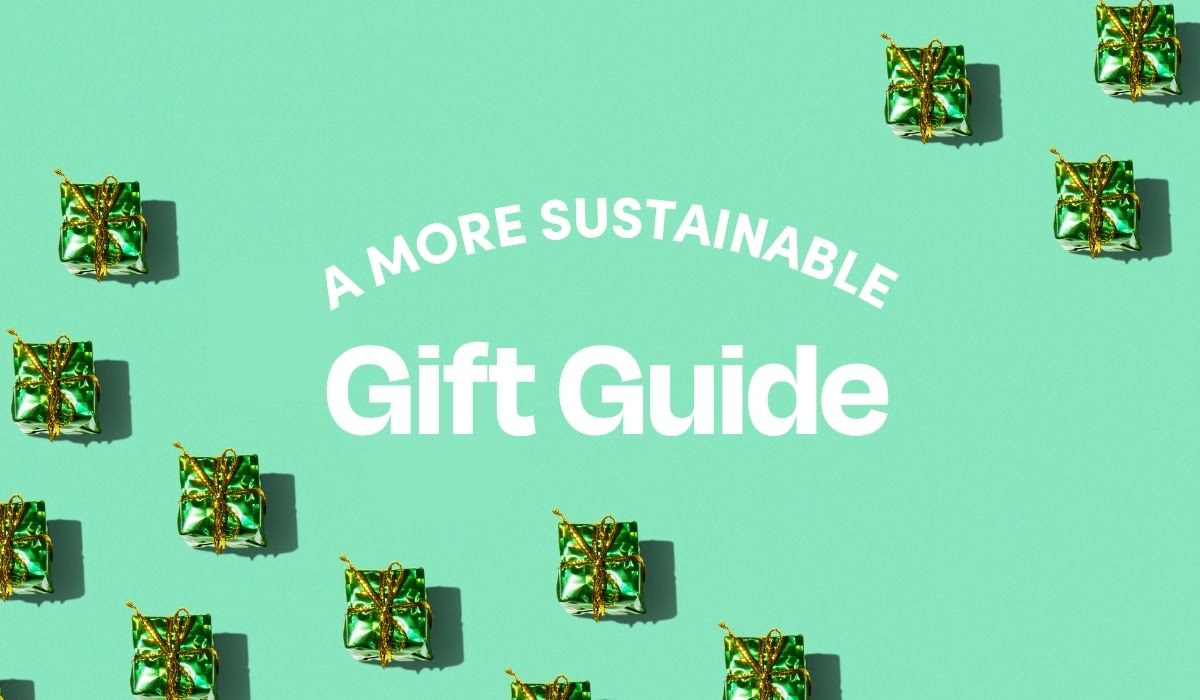How to Choose Mascara Without Harmful Chemicals

Mascara is one of the most commonly used beauty products, and each tube actually takes a lot of resources to make. And, since each one is only supposed to last about three months, we collectively end up tossing around 200 million tubes every year. (Yeah, that's a lot of waste... and let's be real, those tubes are impossible to fully clean out, adding some chemical complexity to the disposal.) To keep our lashes happy and shop with the planet in mind, look for fragrance-free formulas made with non-synthetic oils and waxes. Choose a brand that uses recycled materials in its packaging or offers refillable options.
Ingredients
When commercial mascara became available in the mid-19th century, it was offered as a paste made from petroleum jelly and coal dust. Yikes. While we’ve certainly advanced, the actual ingredients can still feel like a mystery. The Food and Drug Administration (FDA) doesn’t pre-approve beauty product ingredients, except for color additives, before they hit the shelves, so it’s up to us to be a bit ingredient-savvy. Mascara formulations differ depending on the manufacturer and brand, but common formulas typically contain a combination of oils, waxes, colorants, and preservatives. Let’s break it down.
Oils and Waxes
Oils are used to moisturize the lashes while wax thickens the product, helping it adhere to the lashes. The good news is there are plenty of non-synthetic options. The better oils to look out for include jojoba oil (the jojoba plant requires minimal water to grow and helps stabilize the soil around it to help prevent erosion), sunflower oil, and castor oil. Opt for non-toxic wax, such as beeswax and carnauba wax (a natural wax derived from the leaves of the carnauba palm tree). Organic is best for all of the above. Just be wary of paraffin wax, a non-renewable petroleum byproduct that releases carcinogenic compounds into the air, which are toxic to both humans and aquatic ecosystems, when it is refined for use in cosmetics.
Pigments and Dyes
Colorants are added to mascara to produce its rich, dark tint. While the FDA luckily checks and approves colorants for safety during use, the production of colorants comes with some health and environmental concerns we still need to be aware of. Aluminum powder, for example, is a known neurotoxin and allergen. Carbon black (which can be used in non-black mascaras too) can contain trace amounts of PAHS (polycyclic aromatic hydrocarbons) – a carcinogen and pollutant that can contaminate the soil, water, and air. Its production relies on the combustion of fossil fuels, during which it releases small amounts of black carbon soot that can absorb sunlight and heat the atmosphere, which can affect cloud formation and rain patterns. Uncool. Iron oxides are naturally occurring mineral deposits, but mining and extracting them can contribute to soil erosion, habitat destruction, and loss of biodiversity. Given a choice, we’d go for iron oxide as the least harmful colorant.
These ingredients also sometimes hide under other names – for example, carbon black might appear as “D&C Black 2”. Our advice? Look for the specific “color index number” (CI number) on ingredient labels. The CI number allows for standardized identification of colorants, so you can do some sleuthing and avoid options you’re not comfortable with.
Preservatives
Parabens help mascara last longer by reducing the growth of bacteria, which seems like good thing because no one wants bacteria near their eyes. The catch is that they’re known endocrine disrupters – they mess with our body’s hormones and can contribute to reproductive or developmental issues. Due to their extensive use in personal care products (and across other industries), paraben residue can also build up in significant quantities in bodies of water that end up contaminating aquatic environments. Another group of preservatives to be on the watch for are known as formaldehyde-releasers, which, well, release formaldehyde (a known carcinogen) as the preservative loses efficacy.
What about waterproof mascara, you ask? Mascaras labeled as “waterproof” or “long-lasting” may also contain PFAS (per- and polyfluoroalkyl substances) – a group of synthetic “forever chemicals” that don’t really break down in the environment and cause a whole slew of health issues. If you see fluorine on the ingredient list, it’s a red flag for PFAS. Skip it if you can.
Fragrances
Fragrance formulations are considered trade secrets that are protected from disclosure. “Fragrance” typically means there are dozens, sometimes hundreds of toxic chemicals included. We don’t need our mascara to smell like a botanical garden – go fragrance-free to be safe.
Packaging
Mascara tubes are tricky to recycle – they’re usually made of mixed plastic materials that can’t be taken apart and are caked with residual product. Here are a few considerations:
- Packaging made using recycled content not only reduces the demand to source and process virgin materials, but also helps create demand for closed-loop material solutions. One study showed that incorporating post-consumer recycled content in cosmetic tubes reduced the environmental impact by an average of 12% and decreased emissions by 29%. We’ll take it! Bonus points if the recycled content includes the applicator, too. Can you believe the very first mascara using a recycled fiber brush was only introduced to the market in 2023?
- Non-plastic packaging options such as aluminum, glass, and bamboo are becoming more common. Glass is non-toxic, can be endlessly recycled, and won’t break down into micro-plastics in the environment. Its production also tends to have a higher footprint than plastic, aluminum, or bamboo. Choose glass only if you really intend on reusing the packaging. Bamboo’s regenerative nature means that harvesting it has very little impact on the environment, but it’s also more difficult to recycle compared to aluminum, which has one of the most established and efficient recycling infrastructure systems.
- Refillable options can also help cut down on the waste from single-use products and packaging. If you’re planning to return empties by mail, it’s always helpful to do some quick due diligence to make sure the receiving facility is relatively local and has a strategy in place for cleaning and redistributing (check out our disposal tip below).
- You can’t always have a home run, and sometimes small steps forward can lead to a big impact. Modular packaging (think having a cap that’s detachable from the wand) can help increase the recyclability of mascara products.
Usage Tips
Application: Avoid pumping the wand up and down, which can introduce air into the tube and dry out the mascara much faster.
Removal: Avoid using waterproof mascara whenever possible, which can require additional water, cleanser, and the use of wipes or make-up pads to remove – not only does this help minimize PFAS, but it can also help minimize waste.
Disposal: Unfortunately, there aren’t many standardized recycling options for mascara, but look for brands that have takeback programs for empty returns, or get together with friends to stockpile multiple empty products and send them to a third-party that can handle out-of-the-ordinary recycling requests.
Certifications:
Leaping Bunny
Leaping Bunny is an internationally recognized symbol that guarantees no animal tests were conducted on any of the ingredients in a product. Prioritize this one if you want to alleviate any animal welfare concerns.
EWG
The Environmental Working Group has created a database that aims to be the gold standard in rating personal care and cleaning products based on their ingredients, ensuring products are free from chemicals of concern. Look for the EWG logo to make sure you’re avoiding those pesky ingredients.
Fun Fact
Rather than using oil and waxes, tubing mascara uses water-soluble polymers (the most common polymer, PVP, is FDA approved) to create tiny tubes of product around each eyelash, making it easy to remove with some gentle pressure and some water. No make-up remover required!
Join today to get access to product recommendations,
unlimited articles, and exclusive weekly content.
(16% discount)
Already a member? Log in.
Choose Wisely with Finch

Essential Mascara
This brand will send you a refill if you hold onto the wand (or you can buy another wand, too!). Very conscious packaging
.svg)
.svg)

Limitless Lash Mascara
Ilia did a Lifecycle Assessment (LCA for those who want to sound cool) and their mono-material tube reduces carbon emissions by 48% and waste by up to 20% compared to another material
.svg)
.svg)

Levitation Lash
Won Cosmopolitan's 2024 Holy Grail Beauty Award for Best Lengthening Mascara, this uses 94% post-consumer recycled packaging and uses a bio-fiber brush made from castor plant-derived polymers.
.svg)
.svg)

Peptide Lengthening Mascara
This company is serious about mascara and you can get new refills, saving as much as 50% of plastic waste
.svg)
.svg)

Liquid Lash Extensions Mascara
Truly the best mascara Lizzie has ever tried (and she's gone through a LOT), this tubing mascara looks phenomenal, and your purchase goes towards supporting work in cancer, domestic abuse, homelessness & poverty, and so much more.
.svg)
.svg)

The Mascara
Low waste, glass vial, refillable. Need we say more?
.svg)
.svg)
Learn more about our sources and methodology
LEARN MORE









